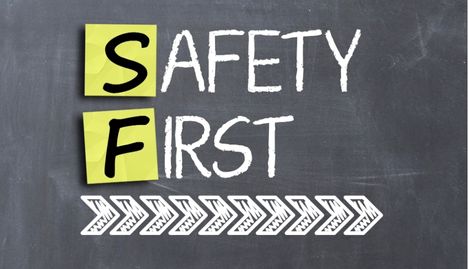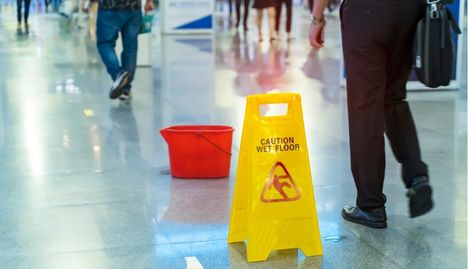Personal Protective Equipment (PPE) in Cleaning: What You Need to Know
Personal Protective Equipment (PPE) acts as the first line of defence to protect the wearer in many ways. Cleaning plays a vital role in the protection and hygiene across a range of different environments; however, these tasks can expose workers to many dangers, such as harsh chemicals or allergic reactions.
In this article, we will discuss more about why the use of PPE is vital in cleaning, the different types of PPE available, and the necessary guidance to follow to ensure proper practice.
Why PPE Is Essential In Cleaning Activities
The act of cleaning itself opens the individual up to excess dust, germs and, in some cases, physical injuries such as accidents with heavy lifting, trips and sprains. Additionally, many cleaning products contain chemicals that can cause skin irritation, allergic reactions or difficulties with the respiratory system if inhaled or come into contact with the skin.
The wearing of PPE significantly reduces the risk of potential hazards, as it acts as a barrier between the hazardous substances and the cleaner. Finally, it is also a legal obligation for employers to supply their workers with adequate PPE to promote the safety and well-being of their staff.
Varying Types Of PPE
Gloves
Gloves are often the first thing that comes to mind when you think about PPE. Cleaning requires excessive use of the hands; therefore, it is vital that they remain protected at all times. Gloves in cleaning protect the hands from harsh chemicals, prevent the spread of bacteria, and also protect against cuts or burns.
There are different types of gloves available, and they are made using different materials such as latex or nitrile. It's important to assess your task and use the appropriate type to ensure maximum safety.
Masks
There is a variety of masks suitable for a range of applications. Basic surgical masks help protect the wearer from inhaling dust, chemical fumes or infectious diseases. Whereas, you can also choose N95 respirators or powered air-purifying respirators that filter out harmful particles and prevent inhalation.
Eyewear
Goggles or safety shields shelter the eyes from chemical splash backs, fumes and any flying debris during tasks such as pressure washing.
Aprons
Disposable aprons or covers shield both clothing and skin from splashes and spills.
Protective Footwear
Special footwear may be required to prevent physical injury, such as trips and falls, with extra non-slip qualities. Furthermore, waterproof or closed-toe shoes prevent the risk of chemical spills.
Hearing
Earplugs or earmuffs may be used in the event of loud cleaning machinery to protect against hearing damage.
Best Practices Whilst Using PPE
Inspect Before Use: If your PPE item is out of date, or you notice any rips, tears or defects, throw it away and get a new product.
Proper Fit: To make the most out of your PPE, ensure that all products fit securely.
Replace Old Items: Some items of PPE are disposable after the first use, and others are reusable. Check that you are up-to-date regarding the wearing of your PPE and follow this accordingly. If you can wear the item again, make sure to follow hygiene protocols between each wear.
Handwashing - You are required to wash your hands thoroughly before and after using PPE equipment.
Storage - Make sure that your PPE is stored away from direct sunlight in a clean and dry space, where all wearers have access to it.
PPE In Cleaning: Tailor To Your Needs
PPE plays a crucial role in complying with safe cleaning practices. There are many different types of PPE available, including protective clothing, face protection and respiratory protection. Within these categories, there are again varying types of PPE to suit individual requirements.
In order to keep safe and ensure compliance, it's vital to wear the appropriate PPE for the job and to follow our recommended guidance on best practices.







